- 型号: MKT1817422065W
- 制造商: Vishay
- 库位|库存: xxxx|xxxx
- 要求:
| 数量阶梯 | 香港交货 | 国内含税 |
| +xxxx | $xxxx | ¥xxxx |
查看当月历史价格
查看今年历史价格
MKT1817422065W产品简介:
ICGOO电子元器件商城为您提供MKT1817422065W由Vishay设计生产,在icgoo商城现货销售,并且可以通过原厂、代理商等渠道进行代购。 MKT1817422065W价格参考。VishayMKT1817422065W封装/规格:薄膜电容器, 0.22µF 薄膜电容器 40V 63V 聚酯,金属化 径向。您可以下载MKT1817422065W参考资料、Datasheet数据手册功能说明书,资料中有MKT1817422065W 详细功能的应用电路图电压和使用方法及教程。
| 参数 | 数值 |
| 品牌 | Vishay / Roederstein |
| 产品目录 | 无源元件 |
| 描述 | 薄膜电容器 .22UF 63V 10% |
| 产品分类 | |
| 产品手册 | |
| 产品图片 |
|
| rohs | 符合RoHS |
| 产品系列 | 薄膜电容器,Vishay / Roederstein MKT1817422065W |
| 产品型号 | MKT1817422065W |
| 产品 | General Film Capacitors |
| 产品种类 | |
| 加载寿命 | 300000 h |
| 商标 | Vishay / Roederstein |
| 外壳宽度 | 3.5 mm |
| 外壳长度 | 7.5 mm |
| 外壳高度 | 8.5 mm |
| 容差 | 10 % |
| 工厂包装数量 | 2000 |
| 引线直径 | 0.5 mm |
| 引线间隔 | 5 mm |
| 损耗因数DF | 8 |
| 最大工作温度 | + 100 C |
| 最小工作温度 | - 55 C |
| 电介质 | Polyester |
| 电压额定值AC | 40 V |
| 电压额定值DC | 63 V |
| 电容 | 0.22 uF |
| 端接类型 | Radial |
| 类型 | Metallized Polyester Film Capacitor |
| 系列 | MKT1817 |
| 零件号别名 | MKT1817422065TR |

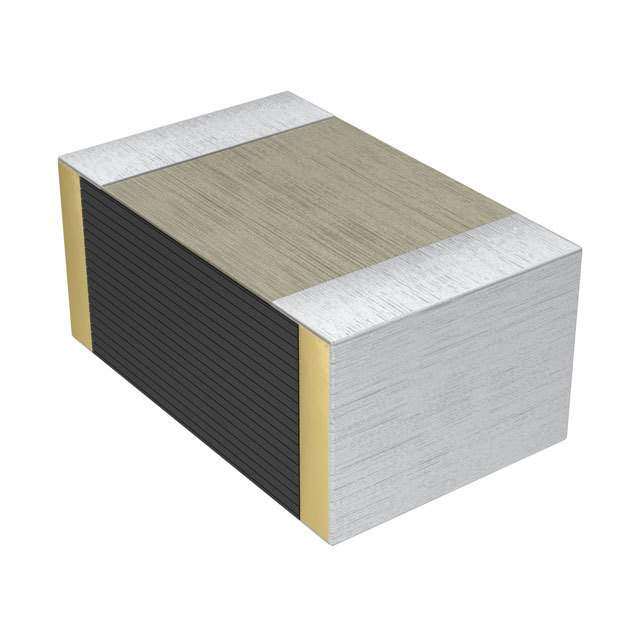
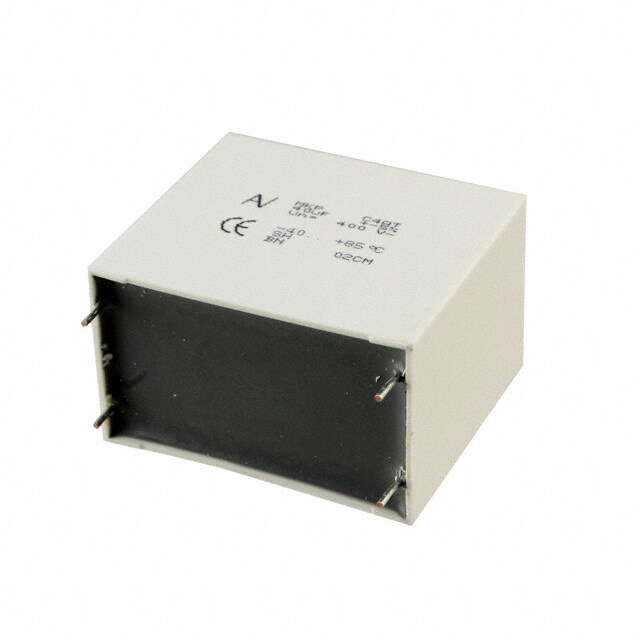
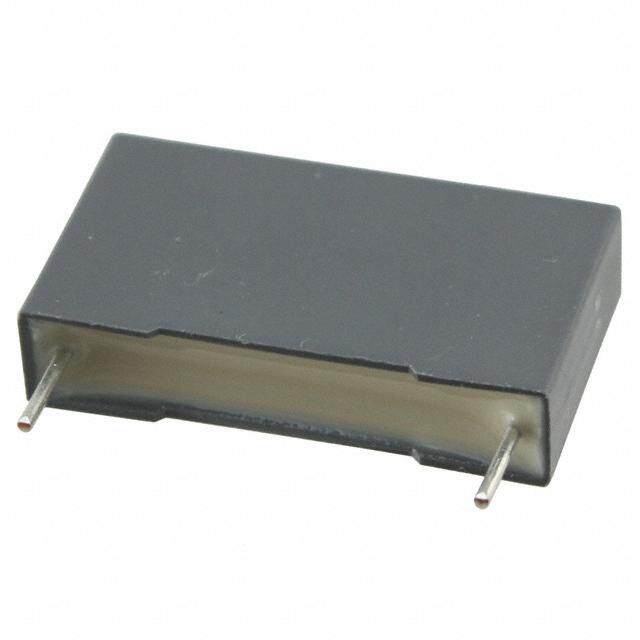


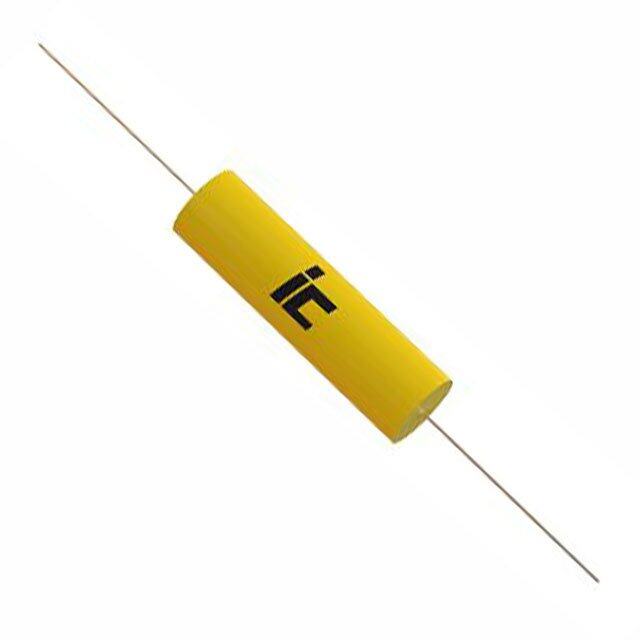
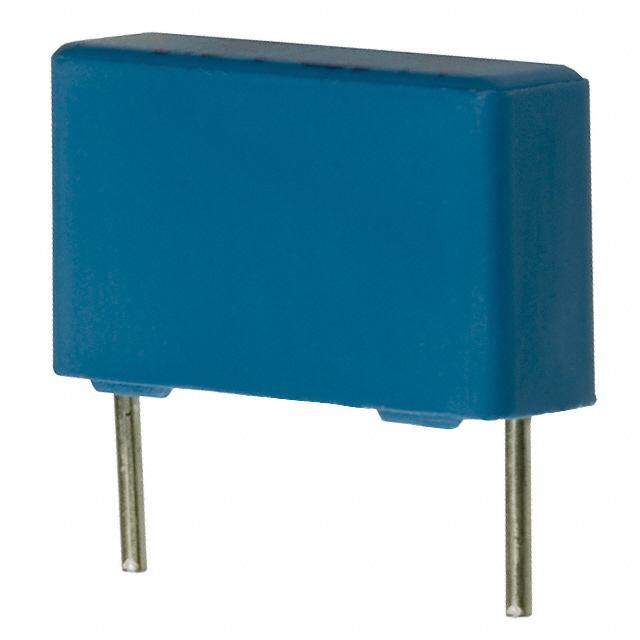
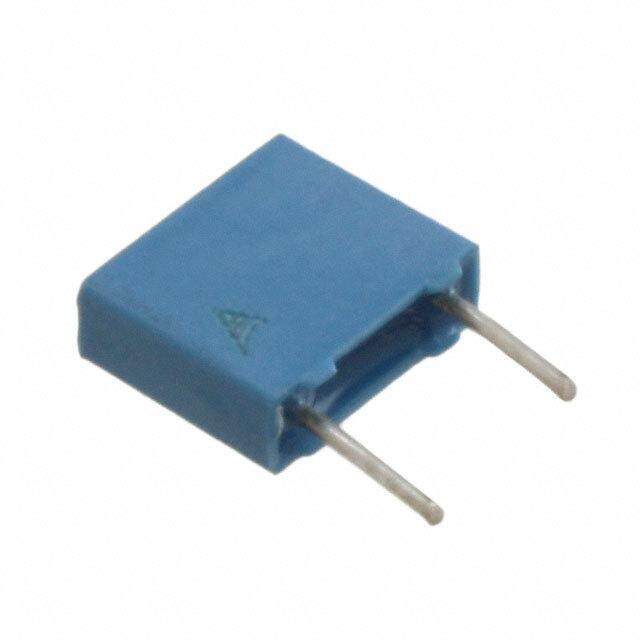

- 商务部:美国ITC正式对集成电路等产品启动337调查
- 曝三星4nm工艺存在良率问题 高通将骁龙8 Gen1或转产台积电
- 太阳诱电将投资9.5亿元在常州建新厂生产MLCC 预计2023年完工
- 英特尔发布欧洲新工厂建设计划 深化IDM 2.0 战略
- 台积电先进制程称霸业界 有大客户加持明年业绩稳了
- 达到5530亿美元!SIA预计今年全球半导体销售额将创下新高
- 英特尔拟将自动驾驶子公司Mobileye上市 估值或超500亿美元
- 三星加码芯片和SET,合并消费电子和移动部门,撤换高东真等 CEO
- 三星电子宣布重大人事变动 还合并消费电子和移动部门
- 海关总署:前11个月进口集成电路产品价值2.52万亿元 增长14.8%

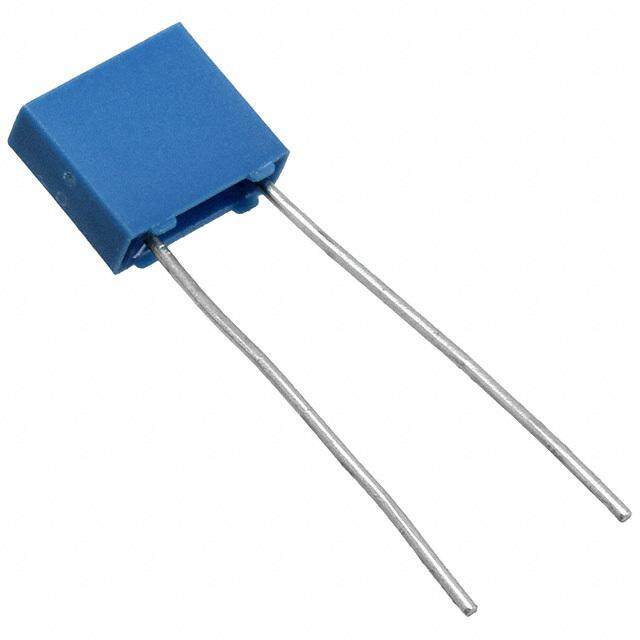


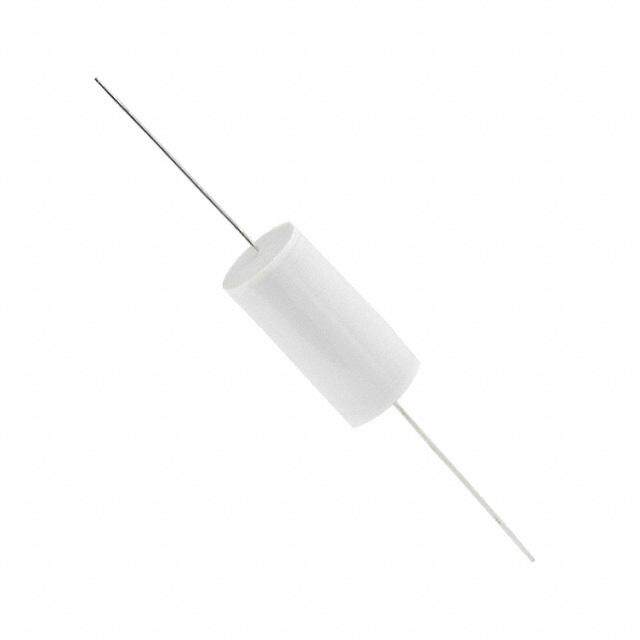
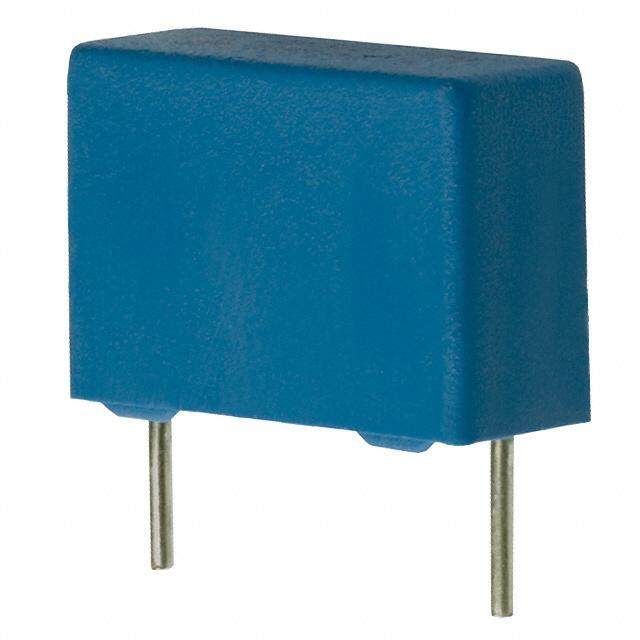
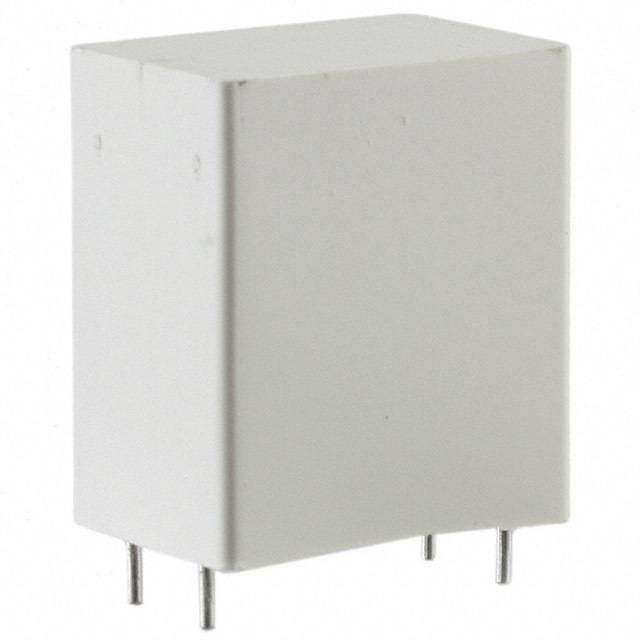

PDF Datasheet 数据手册内容提取
Not for New Designs - Alternative Device: MKT370 MKT1817 www.vishay.com Vishay Roederstein Metallized Polyester Film Capacitors MKT Radial Potted Types FEATURES • Material categorization: for definitions of compliance please see www.vishay.com/doc?99912 APPLICATIONS Blocking, bypassing, filtering and timing, high frequency coupling and decoupling for fast digital and analog ICs, interference suppression in low voltage applications. QUICK REFERENCE DATA Capacitance range 1 nF to 1.0 μF (E12 series) Capacitance tolerance ± 20 % (M), ± 10 % (K), ± 5 % (J) 55/100/56 for rated voltage 63 V Climatic testing class according to IEC 60068-1 55/105/56 for rated voltage > 63 V Reference specifications IEC 60384-2 Dielectric Polyester film Electrodes Metallized Mono construction Construction Encapsulation Flame retardant plastic case and epoxy resin sealed (UL-class 94 V-0) Leads Tinned wire Marking Manufacturer’s logo/type/C-value/rated voltage/tolerance/date of manufacture Rated DC voltage 63 V , 100 V , 250 V , 400 V DC DC DC DC Rated AC voltage 40 V , 63 V , 160 V , 200 V AC AC AC AC Rated temperature 85 °C 100 °C for rated voltage 63 V Maximum application temperature 105 °C for rated voltage > 63 V Performance grade 1 (long life) Note • For more detailed data and test requirements, contact dc-film@vishay.com DIMENSIONS in millimeters l w h l = 6 - 1 t Ø 0.5 ± 0.05 5.0 ± 0.3 Revision: 11-Jan-18 1 Document Number: 26032 For technical questions, contact: dc-film@vishay.com THIS DOCUMENT IS SUBJECT TO CHANGE WITHOUT NOTICE. THE PRODUCTS DESCRIBED HEREIN AND THIS DOCUMENT ARE SUBJECT TO SPECIFIC DISCLAIMERS, SET FORTH AT www.vishay.com/doc?91000
Not for New Designs - Alternative Device: MKT370 MKT1817 www.vishay.com Vishay Roederstein COMPOSITION OF CATALOG NUMBER CAPACITANCE MULTIPLIER (numerically) (nF) 0.1 2 Example: 1 3 468 = 680 nF 10 4 100 5 MKT 1817 X XX 25 X X PACKAGING G Ammo, H = 18.5 mm W Reel H = 18.5 mm, diameter 350 mm TYPE - Bulk TOLERANCE Un = 06 = 63 V 4 ± 5 % Un = 01 = 100 V 5 ± 10 % Un = 25 = 250 V 6 ± 20 % Un = 40 = 400 V SPECIFIC REFERENCE DATA DESCRIPTION VALUE Tangent of loss angle: at 1 kHz at 10 kHz at 100 kHz C 0.1 μF 80 x 10-4 150 x 10-4 250 x 10-4 0.1 μF < C 1.0 μF 80 x 10-4 150 x 10-4 - PITCH RATED VOLTAGE PULSE SLOPE (dU/dt)R AT (mm) 63 V 100 V 250 V 400 V DC DC DC DC 5 60 110 330 630 If the maximum pulse voltage is less than the rated voltage higher dV/dt values can be permitted. R between leads, for C 0.33 μF and UR 100 V > 15 000 M R between leads, for C 0.33 μF and UR > 100 V > 30 000 M RC between leads, for C > 0.33 μF and UR 100 V > 5000 s RC between leads, for C > 0.33 μF and U > 100 V > 10 000 s R R between interconnecting leads and casing 100 V > 30 000 M (foil method) Withstanding (DC) voltage (cut off current 10 mA) (1); 1.6 x U , 1 min rise time 1000 V/s RDC Withstanding (DC) voltage between leads and case 2.0 x U , with minimum of 200 V ; 1 min RDC DC 100 °C for rated voltage 63 V Maximum application temperature 105 °C for rated voltage > 63 V Note (1) See “Voltage Proof Test for Metalized Film Capacitors”: www.vishay.com/doc?28169 Revision: 11-Jan-18 2 Document Number: 26032 For technical questions, contact: dc-film@vishay.com THIS DOCUMENT IS SUBJECT TO CHANGE WITHOUT NOTICE. THE PRODUCTS DESCRIBED HEREIN AND THIS DOCUMENT ARE SUBJECT TO SPECIFIC DISCLAIMERS, SET FORTH AT www.vishay.com/doc?91000
Not for New Designs - Alternative Device: MKT370 MKT1817 www.vishay.com Vishay Roederstein ELECTRICAL DATA DIMENSIONS U CAP. CAPACITANCE RDC VOLTAGE CODE V w x h x l (V) (μF) CODE AC (mm) 0.10 -410 2.5 x 6.5 x 7.2 0.15 -415 2.5 x 6.5 x 7.2 0.22 -422 3.5 x 8.0 x 7.2 63 0.33 -433 06 40 3.5 x 8.0 x 7.2 0.47 -447 3.5 x 8.0 x 7.2 0.68 -468 4.5 x 9.0 x 7.2 1.0 -510 6.0 x 11.0 x 7.2 0.022 -322 2.5 x 6.5 x 7.2 0.033 -333 2.5 x 6.5 x 7.2 0.047 -347 2.5 x 6.5 x 7.2 0.068 -368 2.5 x 6.5 x 7.2 100 01 63 0.10 -410 2.5 x 6.5 x 7.2 0.15 -415 3.5 x 8.0 x 7.2 0.22 -422 4.5 x 9.0 x 7.2 0.33 -433 4.5 x 9.0 x 7.2 0.0033 -233 2.5 x 6.5 x 7.2 0.0047 -247 2.5 x 6.5 x 7.2 0.0068 -268 2.5 x 6.5 x 7.2 0.010 -310 2.5 x 6.5 x 7.2 0.015 -315 2.5 x 6.5 x 7.2 250 25 160 0.022 -322 3.5 x 8.0 x 7.2 0.033 -333 3.5 x 8.0 x 7.2 0.047 -347 4.5 x 9.0 x 7.2 0.068 -368 6.0 x 11.0 x 7.2 0.10 -410 6.0 x 11.0 x 7.2 0.0033 -233 2.5 x 6.5 x 7.2 0.0047 -247 2.5 x 6.5 x 7.2 0.0068 -268 2.5 x 6.5 x 7.2 0.010 -310 2.5 x 6.5 x 7.2 0.015 -315 2.5 x 6.5 x 7.2 250 25 160 0.022 -322 3.5 x 8.0 x 7.2 0.033 -333 3.5 x 8.0 x 7.2 0.047 -347 4.5 x 9.0 x 7.2 0.068 -368 6.0 x 11.0 x 7.2 0.10 -410 6.0 x 11.0 x 7.2 0.0010 -210 2.5 x 6.5 x 7.2 0.0015 -215 2.5 x 6.5 x 7.2 0.0022 -222 2.5 x 6.5 x 7.2 0.0033 -233 2.5 x 6.5 x 7.2 400 0.0047 -247 40 200 2.5 x 6.5 x 7.2 0.0068 -268 2.5 x 6.5 x 7.2 0.010 -310 3.5 x 8.0 x 7.2 0.015 -315 3.5 x 8.0 x 7.2 0.022 -322 4.5 x 9.0 x 7.2 RECOMMENDED PACKAGING PACKAGING TYPE OF HEIGHT (H) REEL DIAMETER ORDERING CODE PITCH CODE PACKAGING (mm) (mm) EXAMPLES 5 G Ammo 18.5 S (1) MKT1817233255G x W Reel 18.5 350 MKT1817233255W x - Bulk - - MKT1817233255 x Note (1) S = box size 55 mm x 210 mm x 340 mm (w x h x l) Revision: 11-Jan-18 3 Document Number: 26032 For technical questions, contact: dc-film@vishay.com THIS DOCUMENT IS SUBJECT TO CHANGE WITHOUT NOTICE. THE PRODUCTS DESCRIBED HEREIN AND THIS DOCUMENT ARE SUBJECT TO SPECIFIC DISCLAIMERS, SET FORTH AT www.vishay.com/doc?91000
Not for New Designs - Alternative Device: MKT370 MKT1817 www.vishay.com Vishay Roederstein MOUNTING Normal Use The capacitors are designed for mounting on printed-circuit boards. The capacitors packed in bandoliers are designed for mounting in printed-circuit boards by means of automatic insertion machines. For detailed tape specifications refer to packaging information www.vishay.com/docs?28139 Specific Method of Mounting to Withstand Vibration and Shock In order to withstand vibration and shock tests, it must be ensured that the stand-off pips are in good contact with the printed-circuit board. • For pitches 15 mm the capacitors shall be mechanically fixed by the leads • For larger pitches the capacitors shall be mounted in the same way and the body clamped Space Requirements on Printed-Circuit Board The maximum space for length (I ), width (w ) and height (h ) of film capacitors to take in account on the printed-circuit max. max. max. board is shown in the drawings. • For products with pitch 15 mm, w = l = 0.3 mm; h = 0.1 mm Eccentricity defined as in drawing. The maximum eccentricity is smaller than or equal to the lead diameter of the product concerned. w = w + Δw max. Eccentricity Imax. = I + ΔI CBA116 hmax. = h + Δh Seating plane SOLDERING CONDITIONS For general soldering conditions and wave soldering profile, we refer to the document “Characteristics and Definitions Used for Film Capacitors”: www.vishay.com/doc?28147 Storage Temperature T = -25 °C to +35 °C with RH maximum 75 % without condensation stg Ratings and Characteristics Reference Conditions Unless otherwise specified, all electrical values apply to an ambient free air temperature of 23 °C ± 1 °C, an atmospheric pressure of 86 kPa to 106 kPa and a relative humidity of 50 % ± 2 %. For reference testing, a conditioning period shall be applied over 96 h ± 4 h by heating the products in a circulating air oven at the rated temperature and a relative humidity not exceeding 20 %. Revision: 11-Jan-18 4 Document Number: 26032 For technical questions, contact: dc-film@vishay.com THIS DOCUMENT IS SUBJECT TO CHANGE WITHOUT NOTICE. THE PRODUCTS DESCRIBED HEREIN AND THIS DOCUMENT ARE SUBJECT TO SPECIFIC DISCLAIMERS, SET FORTH AT www.vishay.com/doc?91000
Not for New Designs - Alternative Device: MKT370 MKT1817 www.vishay.com Vishay Roederstein CHARACTERISTICS 6 6 C/C%) 1 kHz C/C%) 1 kHz Δ(4 a. 63 V series Δ(4 bc.. 215000 VV sseerriieess d. 400 V series d 2 2 max. max. c 0 0 typical typical b -2 - 2 a -4 - 4 min. min. -6 - 6 -60 -20 20 60 Tamb (°C) 100 - 60 - 20 20 60 Tamb (°C) 100 Capacitance as a function of ambient temperature Capacitance as a function of ambient temperature (typical) for voltage 63 V (typical) for voltages > 63 V 2 102 e ΔC/C (%) 1 ImpedancΩ1 ()01 63 V; 1 µF 63 V; 100 nF 250 V; 10 nF 0 100 - 1 10- 1 - 2 10- 2 - 3 10- 3 102 103 104 f (Hz) 105 104 105 106 107 f (Hz) 108 Capacitance as a function of frequency Impedance as a function of frequency (typical curve) 102 102 e e g g a a AC volt (V) AC Volt(V) 101 10002 12n00F50 n6 nF nFF 101 Tamb ≤ 85 °C, 63 VDC 85 °C < Tamb ≤ 100 °C, 63 VDC 10002 12n00F50 n6 nF nFF 100 100 101 102 103 104 f (Hz) 105 101 102 103 104 f (Hz) 105 Max. AC voltage as a function of frequency Max. AC voltage as a function of frequency Revision: 11-Jan-18 5 Document Number: 26032 For technical questions, contact: dc-film@vishay.com THIS DOCUMENT IS SUBJECT TO CHANGE WITHOUT NOTICE. THE PRODUCTS DESCRIBED HEREIN AND THIS DOCUMENT ARE SUBJECT TO SPECIFIC DISCLAIMERS, SET FORTH AT www.vishay.com/doc?91000
Not for New Designs - Alternative Device: MKT370 MKT1817 www.vishay.com Vishay Roederstein 102 102 e e g g a a oltV) oltV) V( V( AC 2122 nnFF AC 101 Tamb ≤ 85 °C, 100 VDC 31430700 n nnFFF 101 85 °C < Tamb ≤ 105 °C, 100 VDC 314123072200 nnn nnFFFFF 100 100 101 102 103 104 f (Hz) 105 101 102 103 104 f (Hz) 105 Max. AC voltage as a function of frequency Max. AC voltage as a function of frequency 103 103 e e g g a a oltV) oltV) V( V( C C A A 102 102 101 1404.102770 2 nnn nFnFFFF 101 101404207 n.2 7nnF n FFnFF T ≤ 85 °C, 250 V 85 °C < T ≤ 105 °C, 250 V amb DC amb DC 100 100 101 102 103 104 f (Hz) 105 101 102 103 104 f (Hz) 105 Max. AC voltage as a function of frequency Max. AC voltage as a function of frequency 103 103 e e g g a a oltV) oltV) V( V( C C A A 110021 3130 4n .2nF7.1F2 n. 0nF FnF 110021 3130 4n .2nF7.1F2 n. 0nF FnF T ≤ 85 °C, 400 V 85 °C < T ≤ 105 °C, 400 V amb DC amb DC 100 100 101 102 103 104 f (Hz) 105 101 102 103 104 f (Hz) 105 Max. AC voltage as a function of frequency Max. AC voltage as a function of frequency Revision: 11-Jan-18 6 Document Number: 26032 For technical questions, contact: dc-film@vishay.com THIS DOCUMENT IS SUBJECT TO CHANGE WITHOUT NOTICE. THE PRODUCTS DESCRIBED HEREIN AND THIS DOCUMENT ARE SUBJECT TO SPECIFIC DISCLAIMERS, SET FORTH AT www.vishay.com/doc?91000
Not for New Designs - Alternative Device: MKT370 MKT1817 www.vishay.com Vishay Roederstein Maximum RMS Current (Sinewave) as a Function of Frequency The maximum RMS current is defined by I = x C x U . ac ac U is the maximum AC voltage depending on the ambient temperature in the curves “Max. RMS voltage and AC current as a AC function of frequency”. 103 105 or pation fact-4(x 10) 543 RC (s)104 si 2 Dis 1 102 103 C ≤ 0.33 μF (curve 1) 0.33 μF < C ≤ 1.2 μF (curve 2) 1.2 μF < C ≤ 3.9 μF (curve 3) 3.9 μF < C < 6.8 μF (curve 4) C ≥ 6.8 μF (curve 5) 101 102 102 103 104 f (Hz) 105 - 50 0 50 T (°C) 100 amb Tangent of loss angle as a function of frequency Insulation resistance as a function of the ambient temperature (typical curve) (typical curve) 1.2 1.2 Factor1.0 factor1.0 0.8 0.8 0.6 0.6 0.4 0.4 0.2 0.2 0.0 0.0 - 60 - 20 20 60 T ( ° C ) 100 - 60 - 20 20 60 T ( ° C ) 100 amb amb Max. DC and AC voltage as a function of temperature Max. DC and AC voltage as a function of temperature for voltage 63 V for voltages > 63 V 16 16 C) C) T (° T (° Δ Δ 12 12 8 8 4 4 0 0 - 60 - 20 20 60 T ( ° C ) 100 - 60 - 20 20 60 T ( ° C ) 100 amb amb Maximum allowed component temperature rise (T) Maximum allowed component temperature rise (T) as a function of the ambient temperature Tamb for voltage 63 V as a function of the ambient temperature Tamb for voltages > 63 V Revision: 11-Jan-18 7 Document Number: 26032 For technical questions, contact: dc-film@vishay.com THIS DOCUMENT IS SUBJECT TO CHANGE WITHOUT NOTICE. THE PRODUCTS DESCRIBED HEREIN AND THIS DOCUMENT ARE SUBJECT TO SPECIFIC DISCLAIMERS, SET FORTH AT www.vishay.com/doc?91000
Not for New Designs - Alternative Device: MKT370 MKT1817 www.vishay.com Vishay Roederstein HEAT CONDUCTIVITY (G) AS A FUNCTION OF (ORIGINAL) PITCH AND CAPACITOR BODY THICKNESS IN mW/°C HEAT CONDUCTIVITY (mW/°C) W max. (mm) PITCH 5 mm 2.5 2.5 3.0 3.0 4.5 4.0 6.0 5.5 POWER DISSIPATION AND MAXIMUM COMPONENT TEMPERATURE RISE The power dissipation must be limited in order not to exceed the maximum allowed component temperature rise as a function of the free ambient temperature. The power dissipation can be calculated according type detail specification “HQN-384-01/101: Technical Information Film Capacitors”. The component temperature rise (T) can be measured (see section “Measuring the Component Temperature” for more details) or calculated by T = P/G: • T = component temperature rise (°C) • P = power dissipation of the component (mW) • G = heat conductivity of the component (mW/°C) MEASURING THE COMPONENT TEMPERATURE A thermocouple must be attached to the capacitor body as in: Thermocouple The temperature is measured in unloaded (T ) and maximum loaded condition (T ). amb C The temperature rise is given by T = T - T . C amb To avoid radiation or convection, the capacitor should be tested in a wind-free box. Revision: 11-Jan-18 8 Document Number: 26032 For technical questions, contact: dc-film@vishay.com THIS DOCUMENT IS SUBJECT TO CHANGE WITHOUT NOTICE. THE PRODUCTS DESCRIBED HEREIN AND THIS DOCUMENT ARE SUBJECT TO SPECIFIC DISCLAIMERS, SET FORTH AT www.vishay.com/doc?91000
Not for New Designs - Alternative Device: MKT370 MKT1817 www.vishay.com Vishay Roederstein APPLICATION NOTE AND LIMITING CONDITIONS These capacitors are not suitable for mains applications as across-the-line capacitors without additional protection, as described hereunder. These mains applications are strictly regulated in safety standards and therefore electromagnetic interference suppression capacitors conforming the standards must be used. For capacitors connected in parallel, normally the proof voltage and possibly the rated voltage must be reduced. For information depending of the capacitance value and the number of parallel connections contact: dc-film@vishay.com To select the capacitor for a certain application, the following conditions must be checked: 1.The peak voltage (U ) shall not be greater than the rated DC voltage (U ) P RDC 2.The peak-to-peak voltage (U ) shall not be greater than 22 x U to avoid the ionization inception level P-P RAC 3.The voltage peak slope (dU/dt) shall not exceed the rated voltage pulse slope in an RC-circuit at rated voltage and without ringing. If the pulse voltage is lower than the rated DC voltage, the rated voltage pulse slope may be multiplied by U and RDC divided by the applied voltage. For all other pulses following equation must be fulfilled: T 2 x d----U----2 x dtU x d----U---- dt RDC dt rated 0 T is the pulse duration. 4.The maximum component surface temperature rise must be lower than the limits (see graph “Max. allowed component temperature rise”). 5.Since in circuits used at voltages over 280 V peak-to-peak the risk for an intrinsically active flammability after a capacitor breakdown (short circuit) increases, it is recommended that the power to the component is limited to 100 times the values mentioned in the table: “Heat Conductivity” 6.When using these capacitors as across-the-line capacitor in the input filter for mains applications or as series connected with an impedance to the mains the applicant must guarantee that the following conditions are fulfilled in any case (spikes and surge voltages from the mains included). VOLTAGE CONDITIONS FOR 6 ABOVE 85 °C < Tamb 100 °C FOR 63 V ALLOWED VOLTAGES Tamb 85 °C 85 °C < Tamb 100 °C FOR > 63 V See “Max. AC voltage as function Maximum continuous RMS voltage U RAC of temperature” per characteristics Maximum temperature RMS-overvoltage (< 24 h) 1.25 x U U RAC RAC Maximum peak voltage (V ) (< 2 s) 1.6 x U 1.3 x U O-P RDC RDC Example C = 330 nF - 63 V used for the voltage signal shown in next drawing. U = 40 V; U = 35 V; T = 100 μs; T = 200 μs P-P P 1 2 The ambient temperature is 35 °C Checking conditions: 1.The peak voltage U = 35 V is lower than 63 V P DC 2.The peak-to-peak voltage 40 V is lower than 22 x 40 V = 113 U AC P-P 3.The voltage pulse slope (dU/dt) = 40 V/100 μs = 0.4 V/μs This is lower than 60 V/μs (see specific reference data for each version) 4.The dissipated power is 16.2 mW as calculated with fourier terms The temperature rise for w = 3.5 mm and pitch = 5 mm will be 16.2 mW/3.0 mW/°C = 5.4 °C max. This is lower than 15 °C temperature rise at 35 °C, according figure “Max. allowed component temperature rise” 5.Not applicable 6.Not applicable Voltage Signal Voltage U P U P-P T Time 1 T 2 Revision: 11-Jan-18 9 Document Number: 26032 For technical questions, contact: dc-film@vishay.com THIS DOCUMENT IS SUBJECT TO CHANGE WITHOUT NOTICE. THE PRODUCTS DESCRIBED HEREIN AND THIS DOCUMENT ARE SUBJECT TO SPECIFIC DISCLAIMERS, SET FORTH AT www.vishay.com/doc?91000
Not for New Designs - Alternative Device: MKT370 MKT1817 www.vishay.com Vishay Roederstein INSPECTION REQUIREMENTS General Notes Sub-clause numbers of tests and performance requirements refer to the “Sectional Specification, Publication IEC 60384-2 and Specific Reference Data”. GROUP C INSPECTION REQUIREMENTS SUB-CLAUSE NUMBER AND TEST CONDITIONS PERFORMANCE REQUIREMENTS SUB-GROUP C1A PART OF SAMPLE OF SUB-GROUP C1 4.1 Dimensions (detail) As specified in chapters “MKT370 General Data” of this specification 4.3.1 Initial measurements Capacitance Tangent of loss angle: for C 470 nF at 100 kHz for C > 470 nF at 10 kHz 4.3 Robustness of terminations Tensile and bending No visible damage 4.4 Resistance to soldering heat Method: 1A Solder bath: 280 °C ± 5 °C Duration: 10 s 4.14 Component solvent resistance Isopropylalcohol at room temperature Method: 2 Immersion time: 5 min ± 0.5 min Recovery time: min. 1 h, max. 2 h 4.4.2 Final measurements Visual examination No visible damage Legible marking Capacitance |C/C| 2 % of the value measured initially Tangent of loss angle Increase of tan : 0.005 for: C 100 nF or 0.010 for: 100 nF < C 220 nF or 0.015 for: 220 nF < C 470 nF or 0.003 for: C > 470 nF Compared to values measured in 4.3.1 SUB-GROUP C1B OTHER PART OF SAMPLE OF SUB-GROUP C1 4.6.1 Initial measurements Capacitance Tangent of loss angle: for C 470 nF at 100 kHz for C > 470 nF at 10 kHz 4.6 Rapid change of temperature A = -55 °C B = +100 °C 5 cycles Duration t = 30 min 4.7 Vibration Visual examination No visible damage Mounting: see section “Mounting” of this specification Procedure B4 Frequency range: 10 Hz to 55 Hz Amplitude: 0.75 mm or Acceleration 98 m/s2 (whichever is less severe) Total duration 6 h Revision: 11-Jan-18 10 Document Number: 26032 For technical questions, contact: dc-film@vishay.com THIS DOCUMENT IS SUBJECT TO CHANGE WITHOUT NOTICE. THE PRODUCTS DESCRIBED HEREIN AND THIS DOCUMENT ARE SUBJECT TO SPECIFIC DISCLAIMERS, SET FORTH AT www.vishay.com/doc?91000
Not for New Designs - Alternative Device: MKT370 MKT1817 www.vishay.com Vishay Roederstein GROUP C INSPECTION REQUIREMENTS SUB-CLAUSE NUMBER AND TEST CONDITIONS PERFORMANCE REQUIREMENTS SUB-GROUP C1B OTHER PART OF SAMPLE OF SUB-GROUP C1 4.7.2 Final inspection Visual examination No visible damage 4.9 Shock Mounting: see section “Mounting” of this specification Pulse shape: half sine Acceleration: 490 m/s2 Duration of pulse: 11 ms 4.9.3 Final measurements Visual examination No visible damage Capacitance |C/C| 3 % of the value measured in 4.6.1 Tangent of loss angle Increase of tan : 0.010 for: C 220 nF or 0.015 for: 220 nF < C 470 nF or 0.003 for: C > 470 nF Compared to values measured in 4.6.1 Insulation resistance As specified in section “Specific Reference Data 370” of this specification SUB-GROUP C1 COMBINED SAMPLE OF SPECIMENS OF SUB-GROUPS C1A AND C1B 4.10 Climatic sequence 4.10.2 Dry heat Temperature: +100 °C for rated voltage 63 V +105 °C for rated voltage > 63 V Duration: 16 h 4.10.3 Damp heat cyclic Test Db, first cycle 4.10.4 Cold Temperature: -55 °C Duration: 2 h 4.10.6 Damp heat cyclic Voltage proof = URDC for 1 min within 15 min No breakdown or flash-over Test Db, remaining cycles after removal from testchamber 4.10.6.2 Final measurements Visual examination No visible damage Legible marking Capacitance |C/C| 3 % of the value measured in 4.4.2 or 4.9.3 Tangent of loss angle Increase of tan : 0.010 for: C 220 nF or 0.015 for: 220 nF < C 470 nF or 0.005 for: C > 470 nF Compared to values measured in 4.3.1 or 4.6.1 Insulation resistance 50 % of values specified in section “Specific Reference Data 370” of this specification Revision: 11-Jan-18 11 Document Number: 26032 For technical questions, contact: dc-film@vishay.com THIS DOCUMENT IS SUBJECT TO CHANGE WITHOUT NOTICE. THE PRODUCTS DESCRIBED HEREIN AND THIS DOCUMENT ARE SUBJECT TO SPECIFIC DISCLAIMERS, SET FORTH AT www.vishay.com/doc?91000
Not for New Designs - Alternative Device: MKT370 MKT1817 www.vishay.com Vishay Roederstein GROUP C INSPECTION REQUIREMENTS SUB-CLAUSE NUMBER AND TEST CONDITIONS PERFORMANCE REQUIREMENTS SUB-GROUP C2 4.11 Damp heat steady state 56 days, 40 °C, 90 % to 95 % RH 4.11.1 Initial measurements Capacitance Tangent of loss angle at 1 kHz 4.11.3 Final measurements Voltage proof = U for 1 min within 15 min No breakdown or flash-over RDC after removal from testchamber Visual examination No visible damage Legible marking Capacitance |C/C| 5 % of the value measured in 4.11.1. Tangent of loss angle Increase of tan : 0.005 Compared to values measured in 4.11.1 Insulation resistance 50 % of values specified in section “Specific Reference Data 370” of this specification SUB GROUP C3 4.12 Endurance Duration: 2000 h 1.25 x URDC at 85 °C 0.8 x 1.25 URDC at 100 °C for rated voltage 63 V 0.8 x 1.25 URDC at 105 °C for rated voltage > 63 V 4.12.1 Initial measurements Capacitance Tangent of loss angle: for C 470 nF at 100 kHz for C > 470 nF at 10 kHz 4.12.5 Final measurements Visual examination No visible damage Legible marking Capacitance |C/C| 5 % compared to values measured in 4.12.1 Tangent of loss angle Increase of tan : 0.005 at 85 °C 0.010 at 100 °C for: C 220 nF or 0.015 for: 220 nF < C 470 nF or 0.003 for: C > 470 nF Compared to values measured in 4.12.1 Insulation resistance 50 % of values specified in section “Specific Reference Data 370” of this specification Revision: 11-Jan-18 12 Document Number: 26032 For technical questions, contact: dc-film@vishay.com THIS DOCUMENT IS SUBJECT TO CHANGE WITHOUT NOTICE. THE PRODUCTS DESCRIBED HEREIN AND THIS DOCUMENT ARE SUBJECT TO SPECIFIC DISCLAIMERS, SET FORTH AT www.vishay.com/doc?91000
Not for New Designs - Alternative Device: MKT370 MKT1817 www.vishay.com Vishay Roederstein GROUP C INSPECTION REQUIREMENTS SUB-CLAUSE NUMBER AND TEST CONDITIONS PERFORMANCE REQUIREMENTS SUB-GROUP C4 4.13 Charge and discharge 10 000 cycles Charged to URDC Discharge resistance: U R = ---------------------------R------------------------ C x 2.5 x dU/dt R 4.13.1 Initial measurements Capacitance Tangent of loss angle: for C 470 nF at 100 kHz for C > 470 nF at 10 kHz 4.13.3 Final measurements Capacitance |C/C| 3 % compared to values measured in 4.13.1 Tangent of loss angle Increase of tan : 0.005 for: C 100 nF or 0.010 for: 100 nF < C 220 nF or 0.015 for: 220 nF < C 470 nF or 0.003 for: C > 470 nF Compared to values measured in 4.13.1 Insulation resistance 50 % of values specified in section “Specific Reference Data 370” of this specification Revision: 11-Jan-18 13 Document Number: 26032 For technical questions, contact: dc-film@vishay.com THIS DOCUMENT IS SUBJECT TO CHANGE WITHOUT NOTICE. THE PRODUCTS DESCRIBED HEREIN AND THIS DOCUMENT ARE SUBJECT TO SPECIFIC DISCLAIMERS, SET FORTH AT www.vishay.com/doc?91000
Legal Disclaimer Notice www.vishay.com Vishay Disclaimer ALL PRODUCT, PRODUCT SPECIFICATIONS AND DATA ARE SUBJECT TO CHANGE WITHOUT NOTICE TO IMPROV E RELIABILITY, FUNCTION OR DESIGN OR OTHERWISE. Vishay Intertechnology, Inc., its affiliates, agents, and employees, and all persons acting on its or their behalf (collectively, “Vishay”), disclaim any and all liability for any errors, inaccuracies or incompleteness contained in any datasheet or in any other disclosure relating to any product. Vishay makes no warranty, representation or guarantee regarding the suitability of the products for any particular purpose o r the continuing production of any product. To the maximum extent permitted by applicable law, Vishay disclaims (i) any and all liability arising out of the application or use of any product, (ii) any and all liability, including without limitation special, consequential or incidental damages, and (iii) any and all implied warranties, including warranties of fitness for particular purpose, non-infringement and merchantability. Statements regarding the suitability of products for certain types of applications are based on Vishay’s knowledge of typical requirements that are often placed on Vishay products in generic applications. Such statements are not binding statements about the suitability of products for a particular application. It is the customer’s responsibility to validate that a particular product with the properties described in the product specification is suitable for use in a particular application. Parameters provided in datasheets and / or specifications may vary in different applications and performance may vary over time. All operating parameters, including typical parameters, must be validated for each customer application by the customer’s technical experts. Product specifications do not expand or otherwise modify Vishay’s terms and conditions of purchase, including but not limited to the warranty expressed therein. Except as expressly indicated in writing, Vishay products are not designed for use in medical, life-saving, or life-sustainin g applications or for any other application in which the failure of the Vishay product could result in personal injury or death. Customers using or selling Vishay products not expressly indicated for use in such applications do so at their own risk . Please contact authorized Vishay personnel to obtain written terms and conditions regarding products designed for such applications. No license, express or implied, by estoppel or otherwise, to any intellectual property rights is granted by this documen t or by any conduct of Vishay. Product names and markings noted herein may be trademarks of their respective owners. © 2019 VISHAY INTERTECHNOLOGY, INC. ALL RIGHTS RESERVED Revision: 01-Jan-2019 1 Document Number: 91000

 Datasheet下载
Datasheet下载